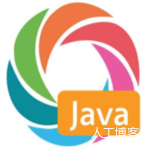@Transactional导致AbstractRoutingDataSource动态数据源无法切换的解决办法
1、背景
项目的数据库采用了读写分离多数据源,采用AOP进行拦截,利用ThreadLocal及AbstractRoutingDataSource进行数据源切换,数据源代码如下:
public class RoutingDataSource extends AbstractRoutingDataSource {
@Override
protected Object determineCurrentLookupKey() {
return DBContext.getDBKey();
}
}
AOP细节就不讲了,大致是拦截mybatis的Mapper层,约定对方法前缀,比如update/delete/insert/save开头的认为是写方法,切换到主库,其它方法切换到从库。spring的xml配置如下:
数据源:
1 <bean id="dsAlfred" class="cn.mwee.utils.datasource.RoutingDataSource">
2 <property name="targetDataSources">
3 <map key-type="java.lang.String">
4 <entry key="master" value-ref="dsAlfred_master"/>
5 <entry key="slave1" value-ref="dsAlfred_slave1"/>
6 <entry key="slave2" value-ref="dsAlfred_slave2"/>
7 <entry key="history" value-ref="dsAlfred_history"/>
8 </map>
9 </property>
10 <property name="defaultTargetDataSource" ref="dsAlfred_master"/>
11 </bean>
事务部分:
1 <bean id="alfredTxManager" class="org.springframework.jdbc.datasource.DataSourceTransactionManager">
2 <property name="dataSource" ref="dsAlfred"/>
3 </bean>
4 <tx:annotation-driven transaction-manager="alfredTxManager"/>
一直用了很久,都很正常(不管是事务方法,还是非事务方法),最近几天发现有一个服务,更新数据库时,一直报read-only异常,当时判断应该是连接到从库上了(注:从库是只读权限,无法更新数据),方法伪代码如下:
1 @Transactional
2 void doSomeThing(){
3 xxxMapper.select(...);
4 yyyMapper.update(...);
5 ...
6 }
执行到第4行的时候,死活切换不到master主库上来,哪怕在doSomeThing方法的首行,设置DBContext.setDBKey("master") 都不好使,而其它类似的方法都正常。于是对比了代码,发现这个方法被调用的地方,最近加了几行代码,伪代码如下:
public void method1(){
xxxMapper.select(...);
...
doSomeThing();
}
即:在调用doSomeThing()方法前,最近因为需求变更,前面加了一行查询操作(大家不用纠结为啥加这一行,产品需要~_~),把这个查询去掉,再执行,就ok了,然后... 然后就开始思考人生了...
2、原因
各种百度,google后,最后在org.springframework.jdbc.datasource.DataSourceTransactionManager#doBegin 这个类的源代码中找到了答案:
1 @Override
2 protected void doBegin(Object transaction, TransactionDefinition definition) {
3 DataSourceTransactionObject txObject = (DataSourceTransactionObject) transaction;
4 Connection con = null;
5
6 try {
7 if (txObject.getConnectionHolder() == null ||
8 txObject.getConnectionHolder().isSynchronizedWithTransaction()) {
9 Connection newCon = this.dataSource.getConnection();
10 if (logger.isDebugEnabled()) {
11 logger.debug("Acquired Connection [" + newCon + "] for JDBC transaction");
12 }
13 txObject.setConnectionHolder(new ConnectionHolder(newCon), true);
14 }
15
16 txObject.getConnectionHolder().setSynchronizedWithTransaction(true);
17 con = txObject.getConnectionHolder().getConnection();
18
19 Integer previousIsolationLevel = DataSourceUtils.prepareConnectionForTransaction(con, definition);
20 txObject.setPreviousIsolationLevel(previousIsolationLevel);
21
22 // Switch to manual commit if necessary. This is very expensive in some JDBC drivers,
23 // so we don't want to do it unnecessarily (for example if we've explicitly
24 // configured the connection pool to set it already).
25 if (con.getAutoCommit()) {
26 txObject.setMustRestoreAutoCommit(true);
27 if (logger.isDebugEnabled()) {
28 logger.debug("Switching JDBC Connection [" + con + "] to manual commit");
29 }
30 con.setAutoCommit(false);
31 }
32
33 prepareTransactionalConnection(con, definition);
34 txObject.getConnectionHolder().setTransactionActive(true);
35
36 int timeout = determineTimeout(definition);
37 if (timeout != TransactionDefinition.TIMEOUT_DEFAULT) {
38 txObject.getConnectionHolder().setTimeoutInSeconds(timeout);
39 }
40
41 // Bind the connection holder to the thread.
42 if (txObject.isNewConnectionHolder()) {
43 TransactionSynchronizationManager.bindResource(getDataSource(), txObject.getConnectionHolder());
44 }
45 }
46
47 catch (Throwable ex) {
48 if (txObject.isNewConnectionHolder()) {
49 DataSourceUtils.releaseConnection(con, this.dataSource);
50 txObject.setConnectionHolder(null, false);
51 }
52 throw new CannotCreateTransactionException("Could not open JDBC Connection for transaction", ex);
53 }
54 }
注意:第7-16行,在开始一个事务前,如果当前上下文的连接对象为空,获取一个连接对象,然后保存起来,下次doBegin再调用时,就直接用这个连接了,根本不做任何切换(类似于缓存命中!)
这样就解释得通了: doSomeThing()方法被调用前,加了一段select方法,相当于已经切换到了slave从库,然后再进入doBegin方法时,就直接拿这个从库的链接了,不再进行切换。那为啥其它同样启用事务的方法,又能正常连到主库呢?同样的解释,因为这类方法前面,没有任何其它操作,而xml中的动态数据源配置,默认连接的就是master主库,因此没有问题。
弄明白了之后,解决办法自然就有了:
public void method1(){
DBContext.setDBKey("master");//先切换到主库
xxxMapper.select(...);
...
doSomeThing();
}
先切到主库上来,这样后面再调用有事务的方法时,就仍然保持在主库的连接上。












